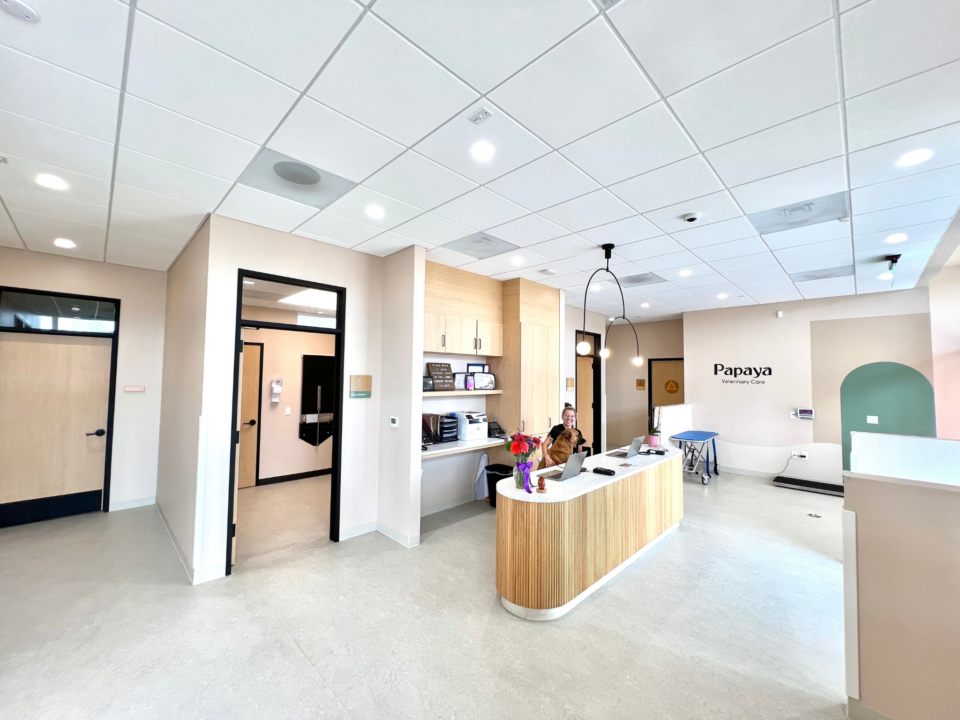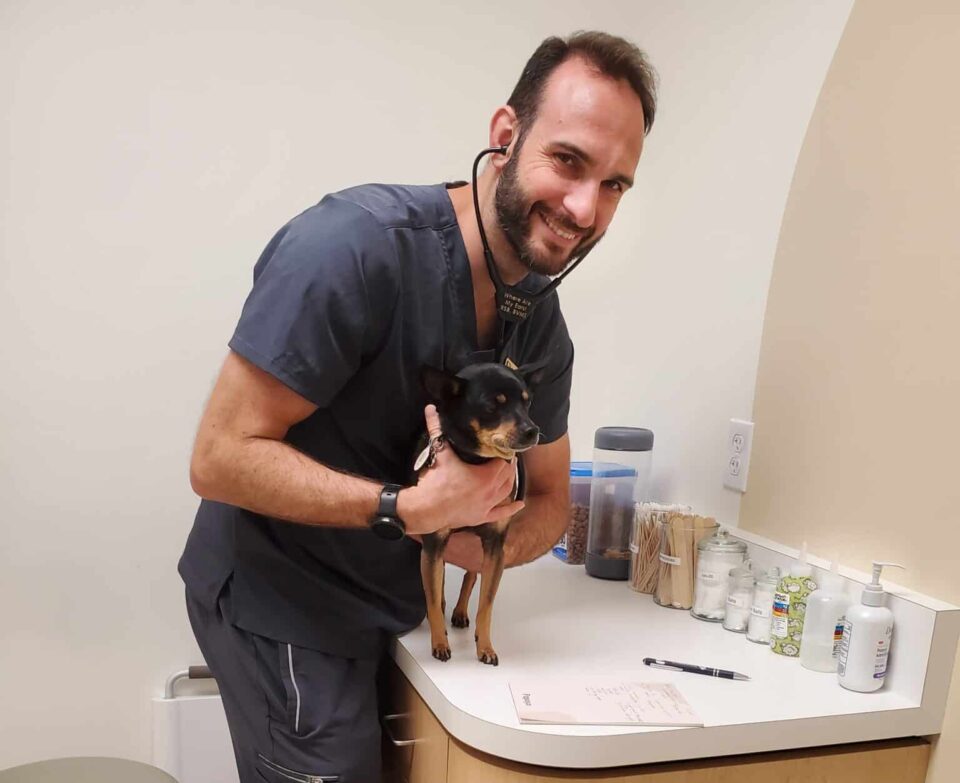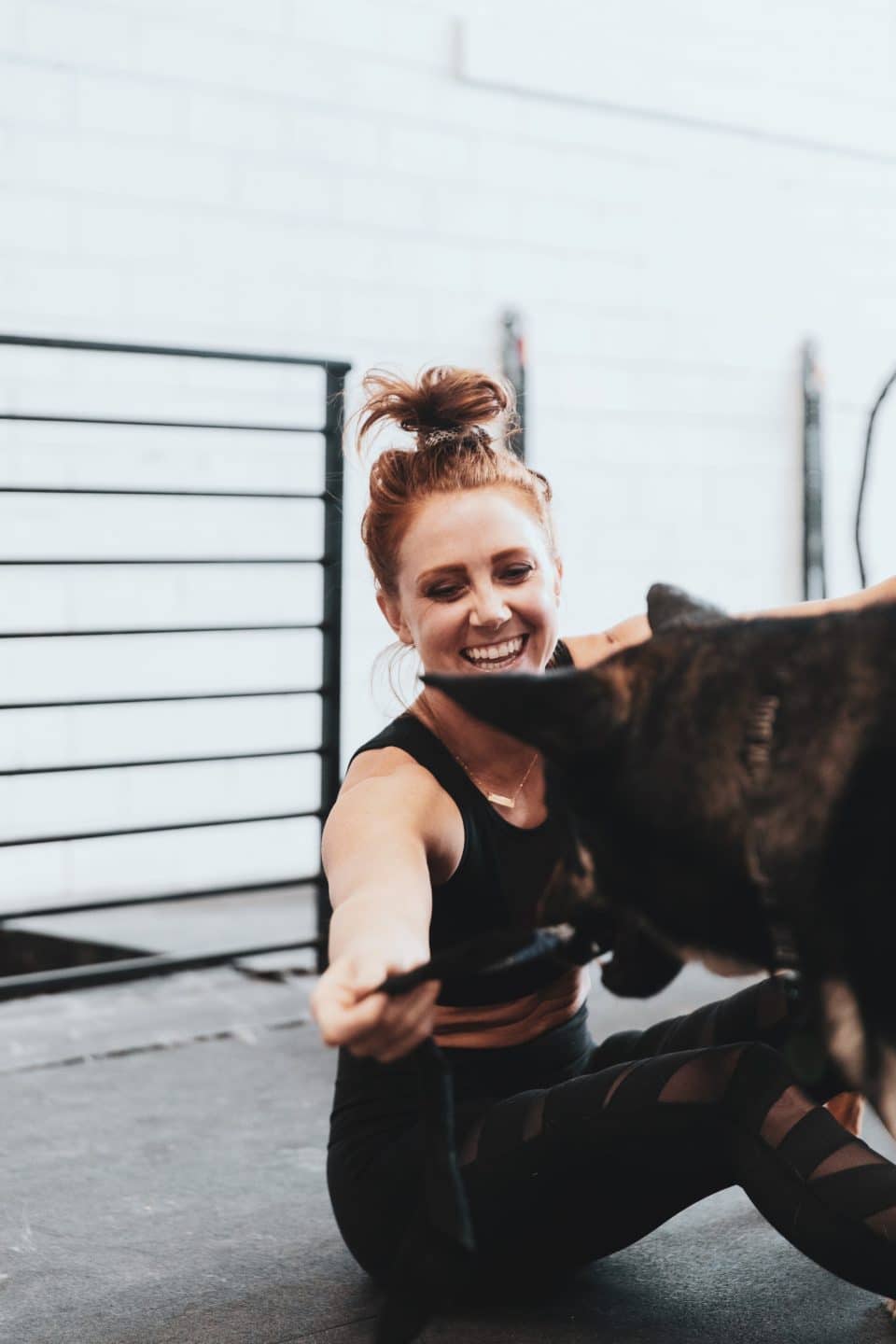Dogs
5 min read
New Treatment Options for Pain Management
Published on Dec 6, 2023

As part of the aging process, older dogs frequently develop arthritis in their leg joints and spine. Depending on breed, body type and activity level, the pain from arthritis can range from mild discomfort to severely debilitating. As a pet parent, it can be very distressing to see your formerly active dog slow down or have difficulty with daily activities.
The good news? Many new options for managing pain in older dogs (and cats) have become available. Some are even reducing the reliance on daily medications for pain.
Our Carmel Valley, San Diego Medical Director, Dr. Jessica Dugan, provides some options for pain management below.
Pain Management – Standard Medications and Supplements
Traditional anti-inflammatory medication
Often we prescribe a medication such as Carprofen™, Rimadyl™, Previcox™ or Onsior™ (for cats). These are given by mouth and help reduce pain and inflammation. Risks to these medications include adverse effects on the digestive tract, liver and kidneys if administered on a long-term basis. Previcox™ and Onsior™ have a slightly better safety profile and are administered once daily.
Newer anti-inflammatory medication
Galliprant™ is a newer anti-inflammatory pain medication that is highly specific and works on one targeted receptor to reduce pain. It is given once daily and has far fewer side effects on the kidney, liver and gastrointestinal tract than the Carprofen™ or Previcox™.
Supplements
- Glucosamine: This is an essential component of healthy joint fluid. Often, we recommend a daily supplement such as Rejensa™, Cosequin™ or Dasuquin™ before signs of arthritis begin, to help the joints stay healthier as your dog ages. Glucosamine is also available as an injection, Adequan™, which is given on a loading schedule over 2-3 weeks and then once monthly. The injectable form is used often in older dogs or injured athletic dogs. The injectable form helps promote healthier joints, whereas the supplement form is given long-term and has a more moderate effect on pain and inflammation.
- Gabapentin: we often use this medication in patients that have some component of nerve pain, which we often see with spinal arthritis. It is relatively safe to use long-term, but as with any long-term medication, we recommend monitoring blood work every 6 months.
Pain Management – New Therapies
Pain Modifying Therapies
In an arthritic joint, more nerve fibers sprout up as part of the inflammatory process. These fibers create an amplification of pain signals that get to the brain. In the past few years, a new monoclonal antibody for pain in both dogs and cats has been developed. This novel approach blocks several of the nerve endings in the arthritic joint, making the joint much less painful. In dogs, this new medication, Librela™, takes the form of an injection, administered once monthly for three months, and then as needed. In cats, Solensia™ is given in a similar manner. We often see such a good response that our patients can reduce or discontinue their usage of daily pain medications, such as Rimadyl™ or Carprofen.
Regenerative Joint Therapies
In small animal veterinary clinics, we are bringing over more treatment options from both human sports medicine and equine sports medicine. To help heal joints, especially after injury or surgery, we often recommend platelet rich plasma (PRP) treatment. PRP is made from a dog’s own blood sample, processed with a centrifuge, and then injected into the joint(s) using sterile technique. This type of product carries growth factors and anti-inflammatories that can both help joints heal and reduce the amount of pain and inflammation present. The process of injecting the joints is done with a light sedation and is easy to accomplish in dogs over 30 lbs. in weight. A variation of PRP is Pro Stride™, which has fewer platelets and more cytokines that ease inflammation.
Additionally, there are now polyacrylamide gels available for dogs, such as Arthramid™, that have been used successfully to reduce pain and promote healthier joints in humans and horses. This type of injection is generally a one-time injection into the affected joint(s) such as hips or knees and is performed under light sedation.
Lastly, a new regenerative therapy injection, Regeneflex K9™, is an exosome-based product that is injected in the muscle near the affected joint. Regeneflex K9™ has been shown to greatly reduce pain while speeding up healing of an injury. It can also be used to help heal tendon and ligament injuries.
Laser Therapy
In addition to the medical solutions listed above, we can also treat joints directly using devices such as laser therapy. Laser devices can be used to help reduce inflammation in specific body areas such as the lumbar spine or joints. These devices can also complement regenerative or traditional therapies by further reducing inflammation. In our clinic, these types of treatments can be set up after an initial consultation, and follow-up treatments be easily performed by a technician. Laser treatments are often used in conjunction with regenerative medicine therapies.
Acupuncture
Medical and veterinary practitioners have relied on acupuncture for over 3000 years to help heal the body and yield information about a patient’s overall health. In our clinic, acupuncture is used to reduce pain from arthritis and help with the quality of life of an older patient. While acupuncture needles are very small and much less painful than standard needles, not all of our dog or cat patients will tolerate acupuncture. Each session must be performed by an experienced veterinarian.
Shockwave Therapy
This is another type of therapy device which delivers sound wave pulses to an injured area and jump starts the healing process. It can be combined with other treatments and is not painful to the patient. It is often used in human and equine sports medicine alongside regenerative treatments to enhance the healing of injuries and reduce pain.
Physical Therapy
In the San Diego area, there are several excellent veterinary physical therapists who can design a program to help your dog recover from surgery or injury. These facilities often have underwater treadmills and therapy pools as well as complementary treatments.
How Papaya Veterinary Care Can Help
Wellness Exams: Early Detection
Our regular wellness exams are designed to catch inflammatory issues before they escalate. We’ll work with you to address any concerns and identify the best therapy for addressing pain concerns.
Urgent Care: For When the Pain Can’t Wait
It can be distressing to see your pet in pain. Our urgent care services are designed to help treat acute pain and adequately address the situation at hand. If your older dog or cat is struggling with arthritis – don’t wait!
Book a veterinary consultation to determine the best treatment options for your furry friend.














